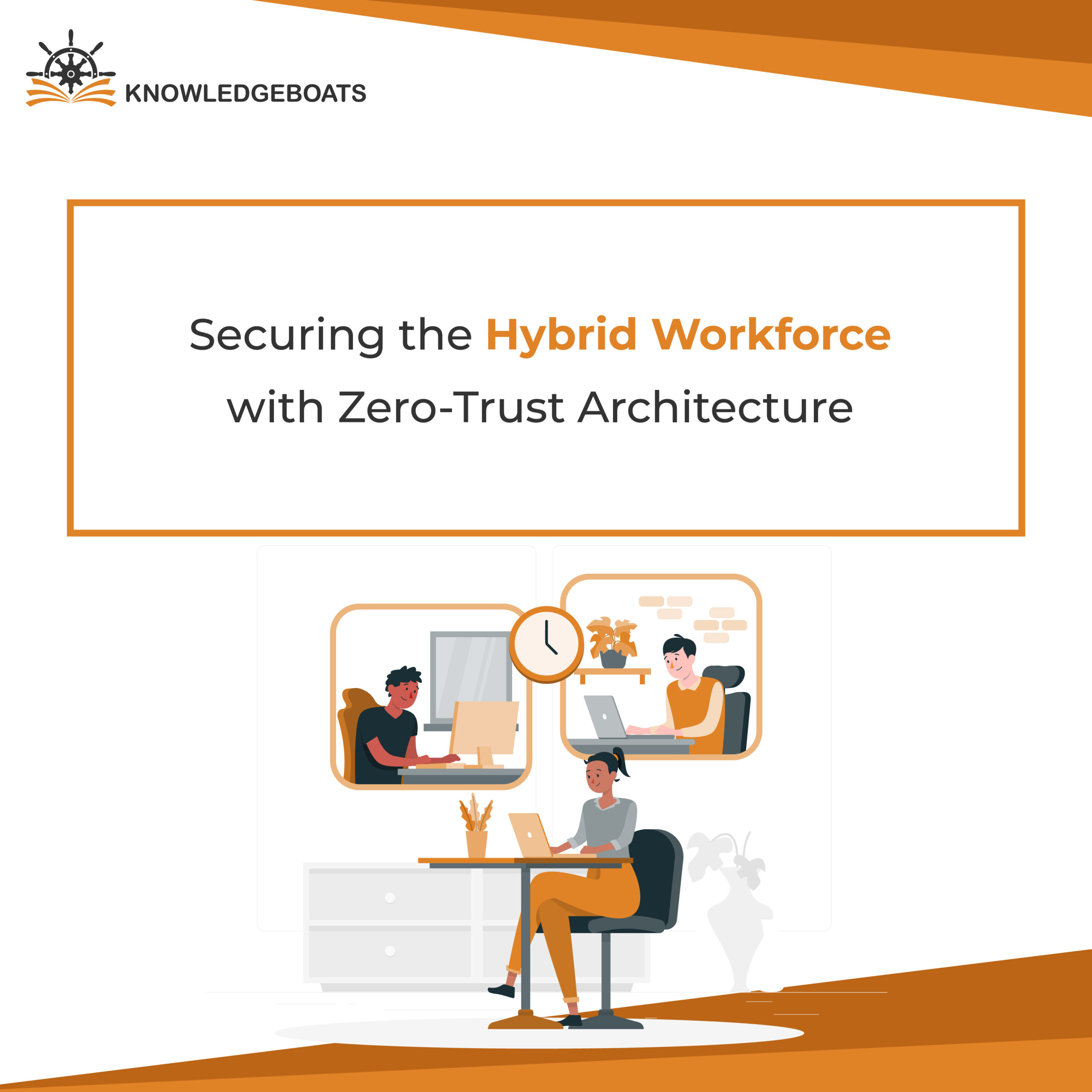
Remember the old gold office? The one with key cards, a friendly security guard, and a big, beefy firewall that was supposed to keep all the bad guys out? That was our “castle and moat.” We felt safe inside those walls.
Then, the world of work blew the doors off that castle.
Today, your “office” is wherever your team is. On the one hand, the new way of working is fantastic. Your team gets the freedom to be productive from a spare bedroom in Pune, a coffee shop in Mumbai, or a client’s office in Bangalore. But on the other hand, if you’re in charge of security, that freedom can feel terrifying. Every one of those locations is a new potential weak spot. The simple, comfortable idea of an “inside” and an “outside” of our network is completely gone. It’s like the walls of our fortress just dissolved, leaving everything exposed.
So, how do you protect your company when there are no walls? You change the rules of the game. You adopt a new philosophy, one that’s perfectly suited for our messy, brilliant, hybrid world: Zero-Trust Architecture.
The Zero Trust Mindset: “Prove It.”
If the old security model was a trusting parent letting their kids run around the house, zero trust is like a friendly but very firm bouncer at an exclusive club. The bouncer doesn’t care if you arrive in a fancy limo or walk up from the street. They don’t care if you say you know the owner. Everyone shows their ID. Every single time.
It assumes that a threat could come from anywhere, even from a trusted employee’s laptop inside what used to be our “safe” network. It’s a strategic shift away from trusting devices or locations and toward verifying identity and context for every single access request. This isn’t just a good idea for hybrid workforce security; it’s the only path forward.
The Commonsense Pillars of a Zero-Trust World
Building a zero-trust hybrid workforce strategy isn’t about buying one magic box. It’s about weaving a few core principles into the fabric of your organization.
1. It All Starts with Who You Are
In a world without a physical perimeter, your identity becomes the new security border. A strong Identity and Access Management (IAM) system is your foundation. But we’re not just talking about a password anymore frankly, passwords are a relic. An identity-centric zero trust for remote teams model demands strong proof of identity, which is why Multi-Factor Authentication (MFA) is non-negotiable.
Even better? The rise of passwordless MFA in a zero-trust hybrid setup. Using biometrics (like a fingerprint) or a physical security key is not only more secure but also a smoother experience for your team. No more forgotten passwords, no more weak credentials.
2. You Only Get the Keys You Absolutely Need
Just because you’re “on the door” doesn’t mean you should have the keys to every room. The principle of the least privileged access is simple: people should only be able to access the specific data and applications they need to do their jobs, and nothing more.
In the old days, logging into the company VPN was like getting a free passkey to the entire building. If a hacker got your credentials, they could roam freely. With zero trust, a marketing manager gets access to the CRM and the design files and that’s it. An engineer in another department can’t even see that those resources exist. This dramatically shrinks the “blast radius” if an account is ever compromised.
3. Building Digital Bulkheads
Think of your network like a massive ship. If you have one big open cargo hold and it springs a leak, the whole ship goes down. But if your ship has sealed bulkheads, you can contain the flooding to one small section.
That’s exactly what micro-segmentation in hybrid environments does for your network. It carves your network into tiny, isolated zones, often wrapping a secure boundary around a single application. The micro-segmentation benefits are huge: if a ransomware attack hits one server, it can’t spread. You’ve contained the fire before it becomes an inferno.
4. Security Isn’t a One-Time Check-In
Verification doesn’t stop after you log in. True continuous monitoring in zero trust means your security system is always asking questions in the background:
- Is that really you, or are you suddenly trying to download 10GB of data at 3 a.m. from a country you’ve never been to?
- Is your laptop’s security software up to date? Or did you just connect from a jailbroken phone on a sketchy public Wi-Fi network?
The benefits of continuous monitoring in zero trust are that it’s dynamic. The system can automatically increase security checks or even revoke access the instant it detects something risky, protecting your data in real time.
The Tech That Makes Zero Trust a Reality
These principles are brought to life by some game-changing technologies designed for our modern, distributed workforce.
The VPN is Dead. Long Live ZTNA.
Let’s talk about the elephant in the room: the VPN. The zero trust vs. VPN for hybrid work debate is over, and the VPN lost. A VPN alternative for zero trust is essential, and that alternative is Zero Trust Network Access (ZTNA).
Instead of dropping a user onto the wide-open network, implementing ZTNA in a hybrid workforce connects a specific, verified user directly to a specific application. The user never touches the underlying network, and the application is invisible to the public internet. It’s like being teleported directly into the one room you need to be in and then teleported out when you’re done.
Bringing It All Together with SASE
If ZTNA is a star player, Secure Access Service Edge (SASE) is the championship team. SASE and zero trust go hand-in-hand. SASE is a cloud-based zero trust framework that bundles all your essential security and networking tools like ZTNA, a cloud firewall, and web security into a single, unified service delivered from the cloud.
The SASE vs. traditional VPN security model isn’t even a fair fight. SASE simplifies everything, ensuring that whether your employee is at home or in the office, they get the exact same robust security policy. It’s the perfect delivery model for a zero-trust architecture for distributed teams.
Don’t Forget the Devices! (EDR)
Finally, you can’t have a secure connection without a secure device. This is especially true when you’re adapting zero trust for a BYOD hybrid workforce. Endpoint Detection and Response (EDR) tools are your “device health checkers,” constantly monitoring laptops and phones for signs of malware or compromise.
How to Get Started (Without Losing Your Mind)
The journey of how to secure your hybrid workforce with zero trust is a marathon, not a sprint. Here are some best practices for zero trust in hybrid work to get you started:
- Start with Your Crown Jewels: Don’t try to secure everything at once. Identify your most critical data, apps, and services. That’s your “protect surface.”
- Understand the Flow: Watch how people and apps access that critical data.
- Pick a High-Impact Project: Start by replacing your clunky old VPN with ZTNA. Your team will thank you for the better experience, and your security posture will improve overnight.
- Write Smarter Rules: Create access policies based on identity, device health, and location.
- Watch, Learn, and Grow: Monitor what’s happening, refine your rules, and gradually expand your zero-trust approach to other areas of the business.
The hybrid workforce isn’t a temporary trend; it’s the future. Wrapping your arms around a Zero-Trust Architecture is the single most important thing you can do to protect your organization, empower your people, and build a business that’s ready for whatever comes next.


